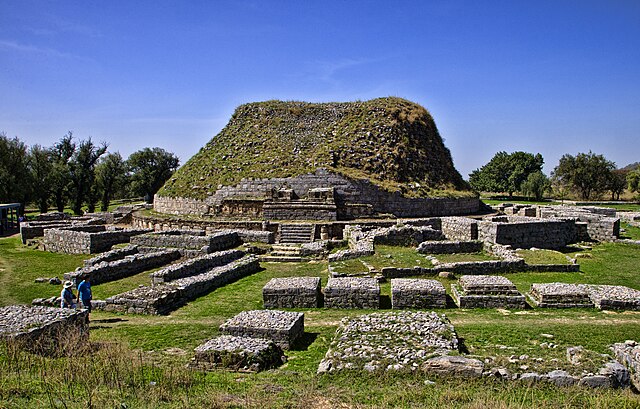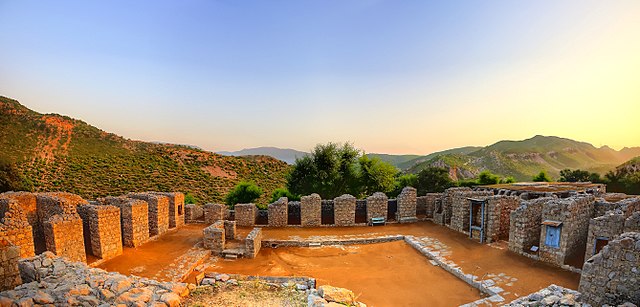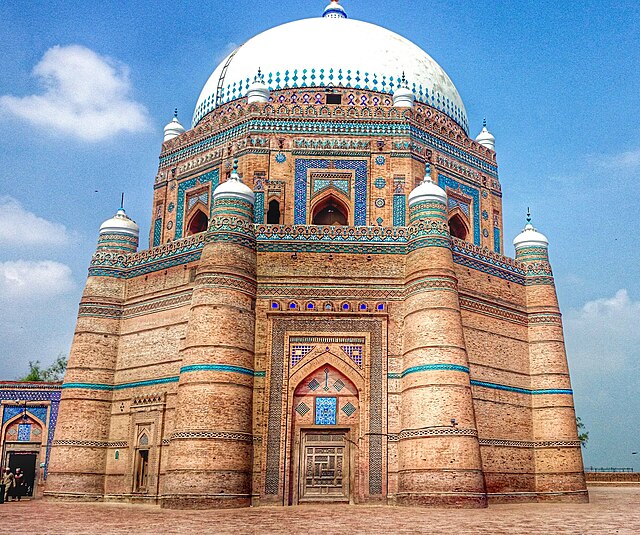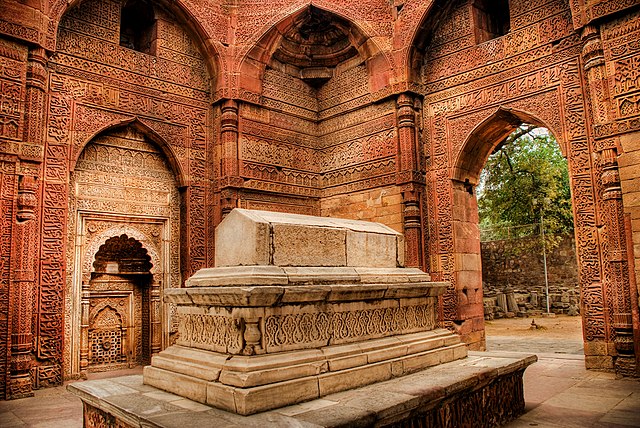Pakistani architecture is intertwined with the architecture of the broader Indian subcontinent. The major architectural styles popular in the past were Temple, Indo-Islamic, Mughal and Indo-Saracenic architecture, all of which have many regional varieties. With the beginning of the Indus civilization around the middle of the 3rd millennium BC, for the first time in the area which encompasses today's Pakistan an advanced urban culture developed with large structural facilities, some of which survive to this day. This was followed by the Gandhara style of Buddhist architecture that borrowed elements from Ancient Greece. These remnants are visible in the Gandhara capital of Taxila.
View of Mohenjo Daro towards the Great Bath.
Dharmarajika Stupa in Taxila
Jaulian, an example of Gandharan architecture
Takht-i-Bahi complex
Indo-Islamic architecture
Indo-Islamic architecture is the architecture of the Indian subcontinent produced by and for Islamic patrons and purposes. Despite an initial Arab presence in Sindh, the development of Indo-Islamic architecture began in earnest with the establishment of Delhi as the capital of the Ghurid dynasty in 1193. Succeeding the Ghurids was the Delhi Sultanate, a series of Central Asian dynasties that consolidated much of North, East, and Central India, and later by the Mughal Empire during the early 16th century. Both of these dynasties introduced Islamic architecture and art styles from West Asia into the Indian subcontinent.
Tomb of Shah Rukn-e-Alam (built 1320 to 1324) in Multan, Pakistan
The Buland Darwaza gateway to Fatehpur Sikri, built by Akbar in 1601
The Qutb Minar (left, begun c. 1200) next to the Alai Darwaza gatehouse (1311); Qutb Complex in Delhi
Mausoleum of Iltutmish, Delhi, by 1236, with corbel arches








